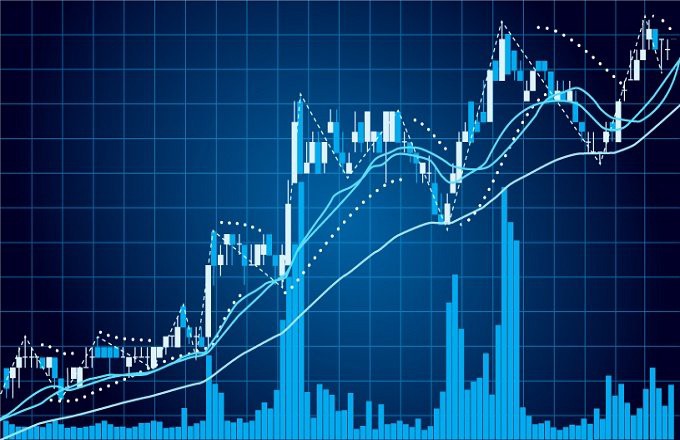Stock Day Buying and selling – Mixing System Buying and selling & Discretionary Buying and selling Right into a More Efficient Approach

New and experienced stock day traders alike grapple by having an important question: Which method is the greatest method of stock day buying and selling, a method approach or perhaps a discretionary approach? While each approach has its own pros and cons, the right answer may, actually, be a mix of the 2 approaches.
System buying and selling means developing a strict group of objective and mechanical rules for identifying if your trade chance exists, when in the event you go into the trade, and how can you exit the trade. The operative test is “objective” and “mechanical”. If some buying and selling rules could be programmatically reduced to a number of computer instructions, then your rules are objective and mechanical.
Among the primary benefits of system buying and selling is it allows you to produce consistent buying and selling results. Quite simply, your own personal buying and selling results ought to be like the results generated through the system. This kind of buying and selling requires hardly any thinking or analysis from you, and all you need to do is stick to the buying and selling system rules without deviation.
However, system buying and selling can be challenging to apply used since it typically requires you to definitely take all the valid signals created from your system to be able to permit the system’s edge to present itself. It is because it might take a great deal of trades to be able to make money having a mechanical method. Consequently, the body will frequently produce entry signals running unlike what your good sense is suggesting. For example, the present buying and selling day can be a quite strong bullish trending day with no indications of selling however, in case your system creates a valid short signal, then you definitely will need to take the signal undoubtedly to be able to permit the edge to manifest within system buying and selling approach. Or, if you’re in a trade and costs come not far from your profit target and all of a sudden reverses back toward your entry, you have to remain in the trade in case your system buying and selling rules need you to achieve this, even though you believe strongly the trade is failing. This kind of buying and selling is extremely difficult on the feelings since it frequently requires you to definitely decide which go against logic.
Discretionary buying and selling, however, entails identifying when you should go in and out a trade according to regardless of whether you cognitively or without effort see that the lucrative trade chance exists. Essentially. you’re assimilating various mental processes of perception and judgment to find out regardless of whether you should either invest or stick to the sidelines. Although discretionary traders also employ rules for entering and exiting a trade, usually discretionary rules don’t satisfy the objective and mechanical test. Typically, discretionary rules can’t be completely programmed for computerized instruction. A good example of discretionary buying and selling could be deciphering the succession of trades occurring in the ask versus trades occurring in the invest in some time and sales to be able to see whether a trade chance exists.
Discretionary buying and selling is generally simpler around the feelings than system buying and selling since you have a tendency to take trades that you simply accept emotionally. For instance, a discretionary trader that trades using the trend and appears for trade records by studying time and purchasers screen would most likely avoid going for a short trade throughout a very bullish trend day by which there have been no indications of selling promptly and purchasers, while he would definitely be buying and selling from the trend.
The primary drawback to discretionary buying and selling may be the sporadic results this kind of buying and selling could possibly produce. Financial markets are constantly altering, and also the conditions and factors who have brought for you putting a winning trade yesterday, might not be just like they’re today. Many of the success of discretionary traders could be related to remarkable ability to see trade chance. However, what might be regarded as exactly the same setup that happened previously, may actually be a completely different setup upon a far more thorough analysis. As humans, we are inclined to biases that let us equally treat all market situations since they look much like past situations. Looks could be deceiving with regards to market analysis and something must perform careful research to make certain that they’re evaluating apples to apples.
There’s another method of stock day buying and selling which mixes both approaches described above. The hybrid buying and selling approach merges together system buying and selling and discretionary buying and selling. Within hybrid buying and selling approach, you’d utilize objective system buying and selling rules for individuals areas of the choice process that will you to definitely achieve consistent results, but discretionary decisions would simply be permitted for situations that do not materially modify the results of the trade. For example, identifying whenever a trade chance exists so when to go in the trade could be performed under objective system buying and selling rules. However, discretionary decisions regarding when and how to exit the trade would simply be permitted after the first profit objective continues to be satisfied since the essence from the trade chance continues to be met. A hybrid buying and selling approach can frequently produce more efficient results than whether system buying and selling approach or perhaps a discretionary approach by counting on the rudimentary concept that sometimes the sum is more than the various components.












